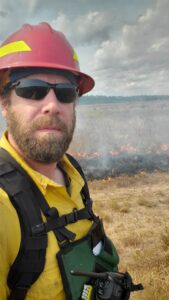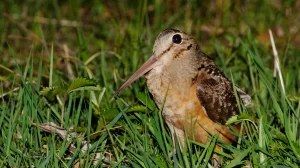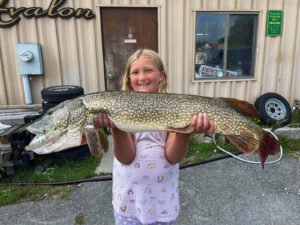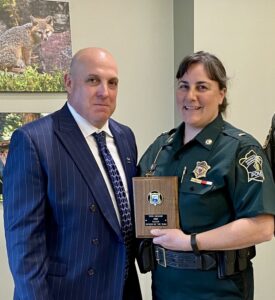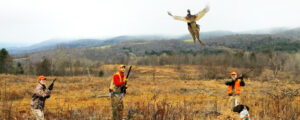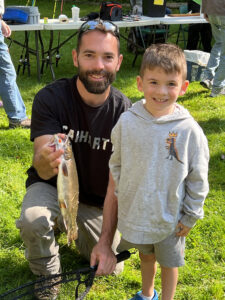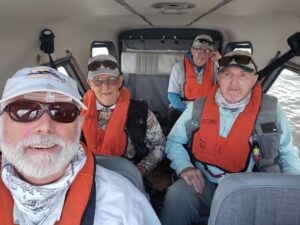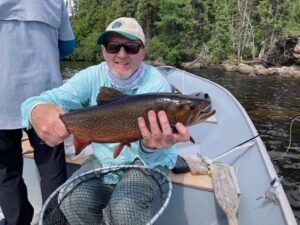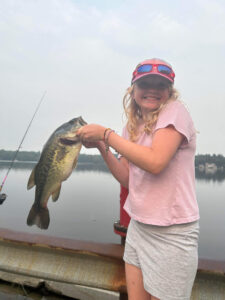The following announcement by MassWildlife noted that you might be surprised to know that hunting is: good for our forests, good for our climate, and helping to alleviate food insecurity in the Commonwealth. Its nice to see something positive written about hunting for a change.
Common throughout Massachusetts, white-tailed deer are an important part of the ecosystem and a valuable natural resource. Deer densities vary from an ideal range of about 12–18 deer per square mile in most of central and western Massachusetts to more than 30–50 deer per square mile in areas of eastern Massachusetts and on the islands where hunting access is mostly restricted. In places with too many deer, forests can become degraded when deer eat too many tree saplings and seedlings. When forests are damaged by over-browsing, they can no longer provide vital habitat for other types of wildlife.
Forests naturally store a significant amount of carbon dioxide, which is crucial for slowing climate change. When deer prevent regeneration of certain tree species and the composition of the forest is altered, forests become less effective at capturing and storing carbon. Excessive deer browsing can impact forests in other ways including increasing the risk of wildfires. Small dead or dying trees and shrubs can serve as “ladder fuels” that provide a pathway for fire to spread from the ground to the canopy of a forest.
High deer densities are also compounding impacts from climate change on coastal erosion along the shorelines of Nantucket and Martha’s Vineyard. When large numbers of deer walk on worn-down trails along cliff edges, weak points are created causing cliff sides to break off. Bedding sites along the beach can damage the vegetation that stabilizes sand and prevents it from being washed or blown away.
Historically, deer populations in Massachusetts were controlled by three main predators: mountain lions, wolves, and humans. Now that mountain lions and wolves are absent from the Commonwealth, regulated hunting provides the main check to the deer population. MassWildlife uses regulated hunting to manage deer abundance across the state. In areas open to hunting, regulated seasons and carefully allocated deer hunting permits are effective ways to maintain deer abundance at levels the landscape can support.
Licensed hunters serve a vital role in conserving Massachusetts forests while providing healthy food to their communities. Each year, harvested venison provides more than 1.8 million family meals to hunters across the Commonwealth with a lean, healthy source of protein and a low carbon footprint. MassWildlife’s new Hunters Share the Harvest Program provides an opportunity for hunters to donate wild game meat to Massachusetts residents in need. After a successful pilot in 2022, in which generous hunters donated more than 1,500 meals of venison, the program is expanding in 2023. The Program now has 3 participating meat processors in Hanover, Fall River, and Groton. Hunters can choose to donate a portion of their harvest, or their entire deer.
Incidentally, anyone can help financially support the program to help cover the processing and packaging costs for donated meat. A donation of $50 will provide about 75 servings of meat for families in need.
Click onto the MassWildlife web site to find out how to donate the venison and/or how to donate funds.
Hunting is a safe and highly regulated activity; all hunters must be properly trained and licensed. Revenue from hunting licenses is used to conserve all wildlife species and their habitats right here in Massachusetts.
Upcoming Fisheries and Wildlife Board Meeting
The October monthly business meeting of the Fisheries and Wildlife Board will take place on Tuesday, October 24, at 11:00 a.m., at the Stationery Factory, 63 Flansburg Avenue, Dalton. Its too late for anyone wishing to be placed on the agenda to speak because notification to the Board must be made in writing 2 weeks prior to the meeting. But it is nice to see these board meetings being held in different parts of the state again. It’s a good opportunity to meet some of the Board members, DFW Director and staff, DFG Commissioner and EPOs and find out what they do.
For more detailed information, contact Susan Sacco at susan.sacco@mass.gov.
Beware of Potentially deadly Halloween stuff
Retired schoolteacher Carolyn Villanova of Pittsfield asked me to inform our readers that the material used in Halloween decorations to represent spider webs can be quite dangerous to birds and small animals. People put it on their lawns and brush to look scary, but unfortunately, the critters could get tangled in it and can die as a result. If you insist on using this stuff, please be sure to check it frequently.
Also, the U.S. Fish and Wildlife Service warns us to beware that painted pumpkins can be toxic to wildlife. Critters will likely eat or nibble on your carved jack-o’-lanterns. Squirrels, raccoons, deer, moose, foxes, mice and insects might feast on the delicious orange porch snack you leave near your front door.
Painted pumpkins can make for an easier way to create a funny or creepy jack-o’-lantern. However; a painted pumpkin can potentially be toxic to wildlife if they eat it. If you choose to paint your pumpkin, please keep it indoors and away from any critters who might feast on its painted flesh. You can also explore nontoxic paint options made with natural ingredients when possible.
In recent years, social media users have posted various “tricks” to keep a carved pumpkin from rotting so quickly. Keep in mind that letting nature take its course is always an option. Carved pumpkins are eventually going to decompose one way or another.
Whitetails Unlimited Banquet
On Saturday, October 28, Whitetails Unlimited will be hosting the Jack William O’Brien Memorial Chapter Banquet at the Stockbridge Sportsmen’s Club, Rte. 102, Stockbridge. Raffles and Social hour at 5:30 and dinner at 7:00 pm. Tickets cost $55.00 each. For tickets or information contact Bill Bailey at (413) 244-2304, WTU Headquarters at (920)743-6777, or go online at whitetailsunlimited.com.
Taconic Chapter of Trout Unlimited Elections
On October 12, at its annual meeting at the Stationery Factory in Dalton, the officers and board members of the Taconic TU Chapter were elected. They are as follows: President: Justin Adkins of Williamstown, VP Rosanne Mistretta of East Chatham, NY, Treasurer Bruce Collingwood of Pittsfield, and Secretary Fran Marzotto of Pittsfield. Elected as Board Members at large were Lindsay McGinnis of Adams, Bill Travis of Pittsfield, and Marc Hoechstetter of Cummington.
Staying with Trout Unlimited, Betsy Clark and Diane Holhubner reported that their Introduction to Fly Fishing for Women event which was held on September 9, was a “huge success.” Fourteen women joined them in the event which taught them the basics of fly fishing and a chance to get experience on the river. They hope to offer it again in the spring.
Its nice to see more women getting involved with Trout Unlimited and learning the gentle sport of fly fishing.
Jack Silvernail Field Trial Results
The annual Jack Silvernail Fall Sanctioned SPO Field Trial for registered beagles was held on October 7 and 8 at the 90-acre Berkshire Beagle Club in Richmond. Some 37 males and 48 females were entered.
On Saturday, October 7, thirteen-inch and fifteen-inch males ran and the winners were:
13” Males – Dog- OT’s SW Ole Dan, owned by John R. Harrington of East Bridge, NY.
15” Males – Dog – JNK’s Donald Trump, owned by Kevin Stanzel of Gloversville, NY.
On Sunday, October 8, thirteen-inch and fifteen-inch females ran and the winners were:
13” Females – Dog – Carreau’s Seaside Sawyer, owned by Gerard A. Carreau III of E. Freetown, MA.
15” Females – Dog – Jimmy’s Little Dolly 2, owned by Jimmy Papudopollos, Andrew Jacoby and Mark Jacoby of Corning, NY.

Jimmy’s Little Dolly2. l to r Judge Erick Harrington, owners Jimmy Papudopolos, Andrew Jacoby and judge Scott John Howard Harrington
Congratulations to all the winners.
Tri Club Skeet Tournament
Recently, the Tri Club Skeet Tournament took place. The three sportsmen’s clubs which participate in the annual tournament are Sheffield, Stockbridge and Lee. In the tournament, they shot two rounds at each club and took the ten highest scores from each club. The results were as follows (out of a possible score of 1,500): Sheffield – 1,369, Stockbridge – 1,304 and Lee with 1,201.
Jim Warner was the high shooter for Sheffield with Ryan Shimmon and Bill Stanard tied for runner up.
Congratulations to the Sheffield club shooters, and to the others, keep “plugging” away.

